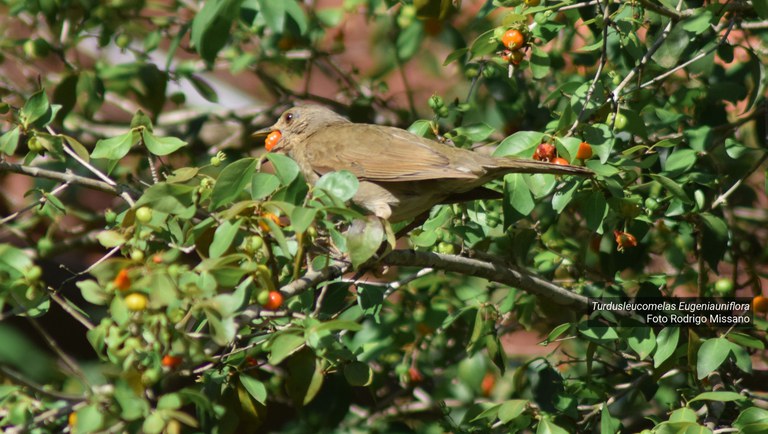Notícias
Birds optimize the size of fruit consumed close to the limits of their geographical range

In a study recently published in Science, researchers have found that birds tend to consume more frequently fruits that match their beak size near the stressful conditions of their range limits.
It has long been known that natural selection should drive species to optimize energy intake per unit effort or time. This selection can lead to patterns of strong matching between consumer and resource traits. For example, birds often optimize their energy intake by eating the largest possible fruits that can fit easily in their beaks with little handling. However, higher environmental stress and energetic demands could theoretically alter the pressure to optimize diet.
Based on this idea, a team of researchers from around the world - including Carine Emer, from the Rio de Janeiro Botanical Garden - tested the hypothesis that birds can vary their consumption of fruits that are close to the size of their beaks in challenging conditions, such as near the limits of their range. To do this, the team relied on a multi-continental dataset of interactions between birds and the fruit species they consume. This dataset covered a wide variety of environments, from tropical and temperate forests to savannas and mountainous regions. Interactions between birds and fruit are particularly interesting because of their association with seed dispersal, a mutualism essential for the survival and spread of many plant species.
The researchers found that birds more frequently consumed closely size-matched fruits near their geographic range limits, a pattern that was strong for birds with a highly frugivorous diet, but absent for bird species that rarely consume fruits. This result suggests that the pressure to optimize diet may increase under stressful conditions, such that frugivorous birds could be forced to optimize their diet to the most profitable, closely size-matched fruits near their range edges. Importantly, birds that rarely consume fruits can optimize energy intake by consuming alternative food items, which may explain why these species did not show the same trend as those that strongly rely on fruits as a food resource.
The findings of this research contribute to our understanding on how species interactions respond to global changes. This knowledge is especially important as global changes are predicted to cause range shifts and contractions, forcing many populations to live near or outside their historic range limits.